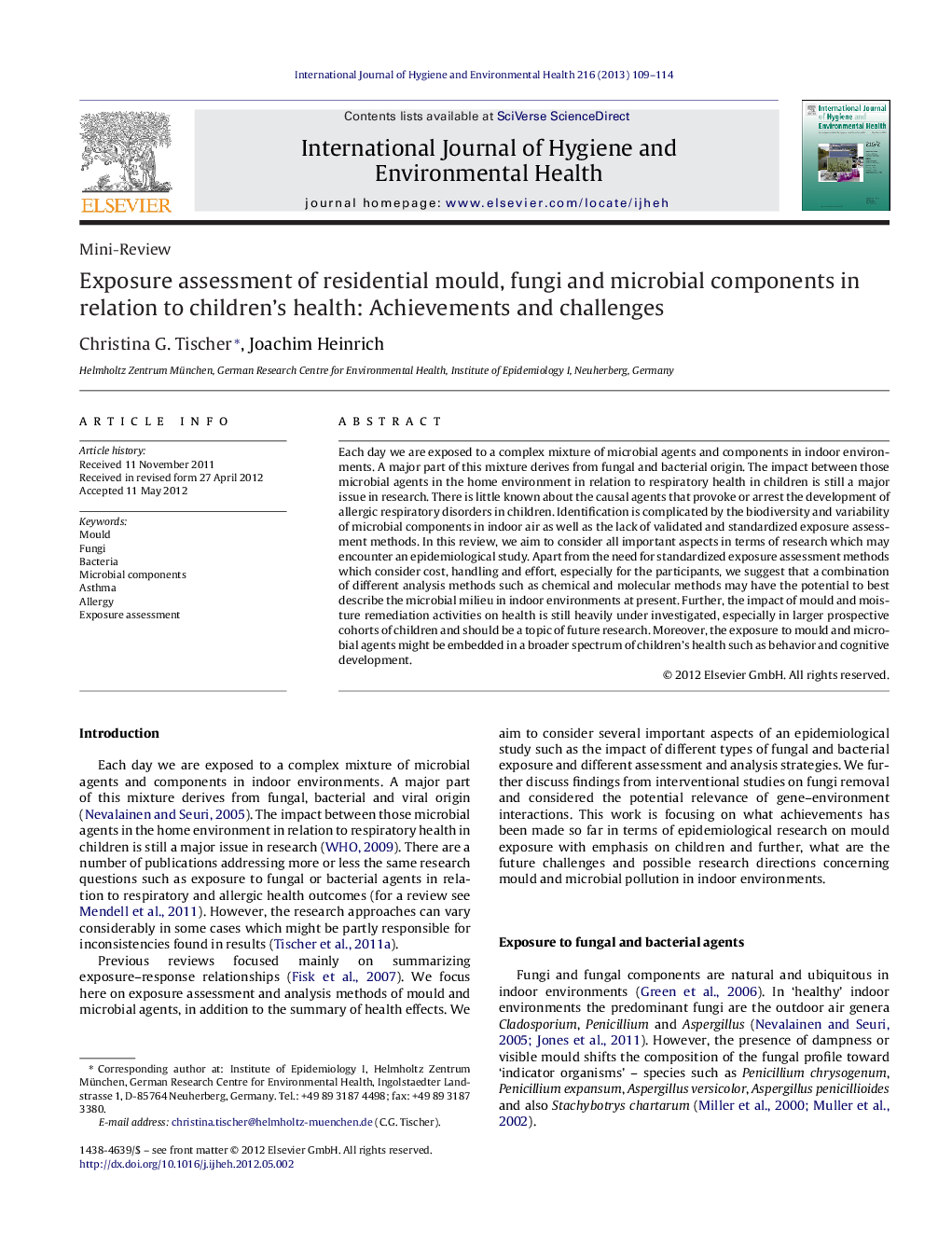| کد مقاله | کد نشریه | سال انتشار | مقاله انگلیسی | نسخه تمام متن |
|---|---|---|---|---|
| 2588902 | 1561904 | 2013 | 6 صفحه PDF | دانلود رایگان |

Each day we are exposed to a complex mixture of microbial agents and components in indoor environments. A major part of this mixture derives from fungal and bacterial origin. The impact between those microbial agents in the home environment in relation to respiratory health in children is still a major issue in research. There is little known about the causal agents that provoke or arrest the development of allergic respiratory disorders in children. Identification is complicated by the biodiversity and variability of microbial components in indoor air as well as the lack of validated and standardized exposure assessment methods. In this review, we aim to consider all important aspects in terms of research which may encounter an epidemiological study. Apart from the need for standardized exposure assessment methods which consider cost, handling and effort, especially for the participants, we suggest that a combination of different analysis methods such as chemical and molecular methods may have the potential to best describe the microbial milieu in indoor environments at present. Further, the impact of mould and moisture remediation activities on health is still heavily under investigated, especially in larger prospective cohorts of children and should be a topic of future research. Moreover, the exposure to mould and microbial agents might be embedded in a broader spectrum of children's health such as behavior and cognitive development.
Journal: International Journal of Hygiene and Environmental Health - Volume 216, Issue 2, March 2013, Pages 109–114